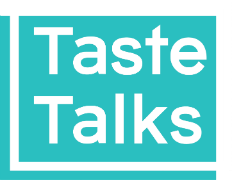Allen Ruan is the owner and originator of the -321 ° Ice Cream Shop in Williamsburg. Don’t let the term “ice cream shop” deceive you. You won’t be greeted by overly-lit cases and tubs of frozen dairy product, but by three colorful mixing machines ready to make your ice cream right in front of you– with the help of LN2.
“When we use liquid nitrogen, what happens is that you freeze the ice cream so quickly, the ice crystals are a lot smaller than in traditional ice cream,” said Ruan.
The smaller ice crystals means that you’re receiving a product that isn’t grainy, like traditional ice cream can be when kept in a freezer; you’re receiving a product that is truly in its prime.
“Our customers often say that it’s a lot creamier and smoother than traditional ice cream; it’s like a mix between gelato and soft serve.”
Ruan explained that he was familiar with the use of nitrogen in food from witnessing top chefs use it in their desserts in the past decade, be it in high end restaurants or on the Food Network . When Googling “dessert trends,” he noticed nitro-ice cream growing on the West Coast, but remaining nonexistent on the East Coast. He decided to change that in September 2015, when he opened his shop. Oh, and that shop name? It’s derived from the boiling point of liquid nitrogen, -321°.
Ice cream isn’t the only place we’re noticing a rise in nitrogen use. Nitrogen is popular amongst those interested in molecular gastronomy due to its accessibility and variety of uses. Chefs utilize the element to freeze the unfreezable (alcohol) and make their presentation ever more exciting with a gaseous cloud pouring off the dish. These techniques can easily take any average dish and bump it up to next-level modern– like we just discussed with ice cream, and have also noticed with coffee.
In 2013, Stumptown Coffee Roasters launched nitro cold brew in their Portland cafes, giving coffee-drinkers two brews on tap to choose from. This nitrogenated beverage is classic cold brew infused with nitrogen and released through a pressurized tap. The beverage is now sold in select local retailers and available at the New York cafe locations.
Nate Armbrust is the Director of Technical Services (Cold Brew) is the mastermind behind this new evolution of coffee.
“When I came on with Stumptown in January 2013, I had access to some larger scale equipment and different gases. We began experimenting with nitrogenated cold brew almost the day I started.”
While the concept of nitro cold brew is innovative and fresh, the idea stems influence from the beer industry . For decades, brewers have been adding nitrogen instead of carbon dioxide to beer. When it’s pushed through a tap, it creates a similar result to what happens with coffee: reduced bitterness and a creamy, smooth mouthfeel.
Diane Aylsworth, Vice President of Stumptown’s Cold Brew division (yes, that’s a real job), explained that this form of coffee has become a favorite of many who try it, even those who despise the taste of black coffee.
“I think nitro really hit the radar and everyone was really excited about this coffee that looked like a Guinness. When we do samplings and let people taste it next to original cold brew, everyone’s mind is blown at how different the product is compared to our traditional cold brew.”
Aylsworth also stated that nitrogen really changes everything about the coffee– from the way it looks, the way it’s poured, and the way it smells. She said that it has a bigger nose to it, and you can truly smell the coffee because it has a good aeration to it.
“When it hits your palate with that aeration, it tastes much creamier and sweeter,” she adds.
Despite creating an entire new branch of coffee (that Starbucks has unsurprisingly picked up on ), the brewers at Stumptown didn’t stop there. They have recently debuted their nitro-cold shot (a cold brew espresso) and cold brew sodas (using the cold shot as the base with some added artisan syrups).
Both parties believe that nitrogenized foods are definitely catching on, and we can expect more improvements and products in the future. Nitrogen is the modern cooking fad, and the possibilities with this element are endless, especially when the results are so consistently pleasant.
Who knows what can be created as more edgy and daring New York chefs take on LN2. Nitro-cocktails? Nitro-donuts? Nitro-pizza? The possibilities are out there, they just need to be discovered, but we’re leaving that in the hands of those more capable. We highly doubt they’ll leave us dissatisfied.










